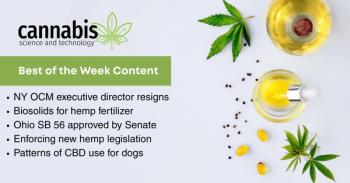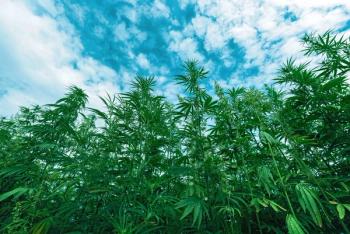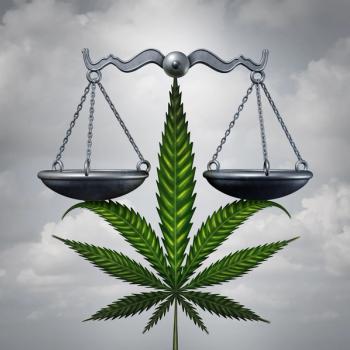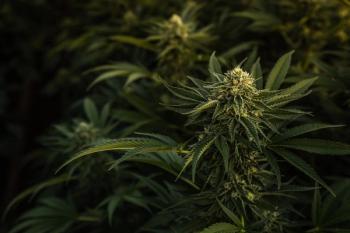
Cannabis Science and Technology
- November/December 2021
- Volume 4
- Issue 9
The Need for In-House Testing: I Hate to Say I Told You So But…

How does the pharmaceutical industry test better to avoid mislabeling problems?
Recently a batch of tincture bottles in Oregon labeled as containing cannabidiol (CBD) and no tetrahydrocannabinol (THC) were found to get people high (1,2). Subsequent investigation showed that the bottles had been mislabeled and contained THC. A number of people have reported adverse affects, and a lawsuit has been filed (2). This problem could have been avoided if proper in-house testing of final products had been implemented. I will review how the pharmaceutical industry tests and avoids problems like this, and will call again for more and better regulation of this industry to save our customers from potentially hazardous products.
Statement of the Problems
As some of you may know, my day job is as CEO and Chief Technical Officer of Big Sur Scientific, and my company makes a mid-infrared (IR) based cannabis analyzer (3). The company motto is “Cannabis is Medicine…Test it Like Medicine!” As I have also mentioned before, I almost gave this column series this name, and considering the headlines I have been reading lately, I wish I had.
Earlier this year some cannabis consumers in the Pacific Northwest started experiencing strange symptoms after consuming what was labeled as a THC-free CBD tincture (1,2). According to one man these symptoms included (2): “Not knowing where I was, if I was talking, my heart rate was north of 140 beats a minute and I thought I was dying.”
(Before you scoff at the idea that a little THC could cause such a horrible reaction, hang on and read the next section on a similar experience I had.)
It turns out the Oregon company that manufactured the tinctures had mislabeled a batch of bottles as containing CBD but no THC, when in fact the bottles did contain THC. Additionally, the bottles containing CBD were mislabeled as containing THC. Thus, people expecting pain relief from CBD got high, while those expecting to get high experienced nothing because they got CBD and not THC. This mistake resulted in medical problems for a number of patients, and everyone was ripped off because they did not get what they paid for. The Oregon Liquor and Cannabis Commission, the state agency in Oregon tasked with regulating the cannabis industry, has issued a mandatory recall of the mislabeled bottles (1), but of course the damage has been done. What has surprised me is the lack of public outcry here. This has essentially been a local news story in Oregon and has received little coverage in the national media. Where’s the outrage? Where is the concern for cannabis patient health?
Now let’s put the shoe on the other foot and think about how things would have gone down if this had happened in the pharmaceutical industry. Imagine if the Dewey, Cheatham, and Howe pharmaceutical company had mistakenly added an ingredient to their aspirin tablets that made people nauseous and vomit. Once this became known it would be national news, the US Food and Drug Administration (FDA) would investigate, congressional hearings would follow, and certainly fines would be levied and people may even go to jail. The company responsible for the problems in Oregon is lucky they are getting off as easy as they are.
Now you might be thinking “Hah, such a problem could never happen in the cannabis industry” or “this is an isolated problem.” It’s not. In fact in an earlier report the same company that mislabeled the tincture bottles was fined $110,000 for “dishonest conduct” (5). The upshot is that they misrepresented what was in their vape products because apparently the people formulating the vape pens on their own added ingredients to the formulation not found in the recipe, and did it without permission and without telling the proper people in management!
THC and Me
Before you dismiss the man quoted above who had a negative experience with THC, let me tell you my own story. Like many of my generation when I was in college, back in the days of yore when dinosaurs roamed the earth, I experimented with marijuana. However, I found the effects of THC disagreeable, and too often found myself curled up in a fetal position under the couch with paranoid delusions. I haven’t touched the stuff since.
However, I am a big fan of the medicinal properties of CBD, and take a dropperful of tincture on a daily basis for arthritis pain. Earlier this year I took some tincture but instead of pain relief I ended up in bed in a fetal position for 4 hours, with my head spinning, wondering what was wrong with me, and thinking I might be dying . . . not unlike the gentlemen quoted above. After the effects wore off, I figured out there must have been THC in the tincture. I tell this story because some of you might think the experience detailed above wasn’t true. What many marijuana devotees may not realize is that for those of us who do not regularly use THC, even a small dose can have a noticeable and unpleasant impact. Thus, I believe the gentlemen mentioned above, and understand
his outrage.
The Pharmaceutical Industry Testing Paradigm . . . Here We Go Again
How could these problems have been prevented? Simple, in-house testing. There exist mid-IR based tincture analyzers that can measure the amounts of CBD and THC in tinctures quickly, easily, and accurately (4). By simply testing each day’s production with an appropriate representative sampling plan these mislabeled products could have been caught. Since the manufacturer didn’t catch the problem, they are not performing final product testing, aren’t doing it right, or aren’t doing it on a frequent enough basis. Why didn’t they have an effective and robust in-house testing program in place? Because no one forced them to.
How do we prevent problems like this going forward? At the moment, to the best of my knowledge, no regulatory agencies require cannabis businesses to perform regular in-house testing. Instead, final products are sent to third party laboratories for analysis. The problem here is that the testing is not frequent enough. In the cases cited above, it is possible that only one batch or one day’s production was bad, and if the law doesn’t require each batch or day’s production to be tested problems like these will continue to occur. We need a government regulatory body requiring the cradle-to-grave testing that is required of medicine manufacturers—as is done in the pharmaceutical industry.
Multiple times in previous columns I have discussed the need for the cannabis industry to adopt the pharmaceutical industry testing paradigm (6-9), and have discussed what the industry needs to do to test correctly. To review:
- In-house testing must be performed on each and every raw material for identity and purity.
- After every manufacturing step every batch of material must be tested to make sure the correct product was produced. This is part of process control and
quality control. - Every batch of every final product needs to be tested to
insure the right ingredients
in the right amounts were added
to the formulation. - Every step of this process must have standard operating procedures to make sure things are done correctly, and management oversight to sign off on each step to insure accountability.
And yes, this testing paradigm probably would have prevented the problems discussed above.
We Don’t Need No Stinking Testing!
I am shocked by the number of cannabis businesses I encounter who refuse to do in-house testing. Of course, the eternal excuse is that they can’t afford it. However, as I have pointed out in previous columns (6-9), in-house testing is not only the right thing to do, but the profitable thing to do. Catching problem products before they go out the door saves time, money, and lawsuits. In-house testing also improves the efficiency of extraction and grow operations leading to increased profits (6-9). However, even when presented with these facts many companies do not bother to set up an in-house testing program.
Another part of the resistance is that some believe cannabis should be treated as a dietary supplement rather than a medicine. However, even the dietary supplement industry is required by the FDA to perform some in-house testing, including identity testing of raw materials.
In-House Testing Must Be Required by Regulatory Agencies
Throughout the three years I have been writing this column I have been pointing out the problems with our industry in the hopes that it would police itself. Given the problems discussed above and the refusal of cannabis businesses to implement in-house testing programs, I am now of the belief that the industry cannot police itself. It is now time for government entities at the state or Federal level to require that cannabis businesses implement robust in-house testing and quality control programs. Current regulations are clearly not enough.
Part of the problem is that current regulations only require testing of the final product to be tested. To the best of my knowledge, no state or Federal agency requires cannabis businesses—particularly final product manufacturers—to implement in-house testing and quality control procedures.
Where’s the FDA in all of this? That is a very good question. The FDA has taken its time to issue final regulations on cannabis products, and I thought they were taking their time so they could do it right. After all the time that has elapsed, I have to conclude they are taking their time because they don’t know what to do. Perhaps for the first time in its history the FDA is faced with a medicine that has been approved in a specific indication, CBD, already being sold across the country in hundreds of different unregulated products without the usual rigor of FDA testing, approval, and oversight. The horse is out of the barn, so how do you go about regulating an industry that is so far ahead of the regulators? I am not a regulatory expert, but I can say that the FDA needs to do something now. It is probably too late to restrict the sale of CBD products around the country (and in no way would I support that), but they can at least make sure these products made are safe, effective, and properly labeled—and they can start by forcing the industry to perform more and better in-house testing. For starters, the FDA could implement the same level of oversight as they do for dietary supplements.
Conclusions
The cannabis industry is in the headlines again with mislabeled and potentially harmful products. This all could have been prevented by a robust in-house testing program. Since the cannabis industry appears incapable of policing itself, it is time for regulators around the country to step up. At minimum, the FDA should start regulating the manufacture of federally legal cannabis products at the same level they do dietary supplements to insure safety, efficacy, and proper labeling so as to protect the health of the
American public.
References
- “OLCC issues recall for hemp product, saying it contains high levels of THC,” KATU,
https://katu.com/news/local/olcc-issues-recall-for-hemp-product-saying-it-contains-high-levels-of-thc . - “Man sues company behind CBD tincture recalled for containing THC,” KATU,
https://katu.com/news/local/man-sues-company-behind-cbd-tincture-recalled-in-oregon-for-containing-thc? . www.bigsurscientific.com .- B.C. Smith, C. Fucetola, K. Ehrmantraut, and T. Hagan, Terpenes and Testing, Sept./Oct 2020 pgs. 19-24.
- “Cura Cannabis will pay record penalty for ‘dishonest conduct,’ misrepresenting marijuana vapes,“ oregonlive.com
- B.C. Smith, Cannabis Science and Technology 2(4), 12–14 (2019
- B.C. Smith, Cannabis Science and Technology 3(8), 10-12 (2020).
- B.C. Smith, Cannabis Science and Technology 3(9), 8-11 (2020).
- B.C. Smith, Cannabis Science and Technology 4(1), 12-15 (2021).
ABOUT THE COLUMNIST
BRIAN C. SMITH, PHD, is Founder, CEO, and Chief Technical Officer of Big Sur Scientific. He is the inventor of the BSS series of patented mid-infrared based cannabis analyzers. Dr. Smith has done pioneering research and published numerous peer-reviewed papers on the application of mid-infrared spectroscopy to cannabis analysis, and sits on the editorial board of Cannabis Science and Technology. He has worked as a laboratory director for a cannabis extractor, as an analytical chemist for Waters Associates and PerkinElmer, and as an analytical instrument salesperson. He has more than 30 years of experience in chemical analysis and has written three books on the subject. Dr. Smith earned his PhD on physical chemistry from Dartmouth College. Direct correspondence to:
How to Cite this Article
B. C. Smith, Cannabis Science and Technology 4(9), 8-10 (2021).
Articles in this issue
almost 4 years ago
Looking with Light: Understanding Gas Chromatography, Part I: Gasesabout 4 years ago
Providing Sufficient Airflow for Plant Growth Environmentsabout 4 years ago
Authenticating the Natural Content of CBD Productsabout 4 years ago
The Correct Filtration Tools for Hydrocarbon ExtractsNewsletter
Unlock the latest breakthroughs in cannabis science—subscribe now to get expert insights, research, and industry updates delivered to your inbox.





